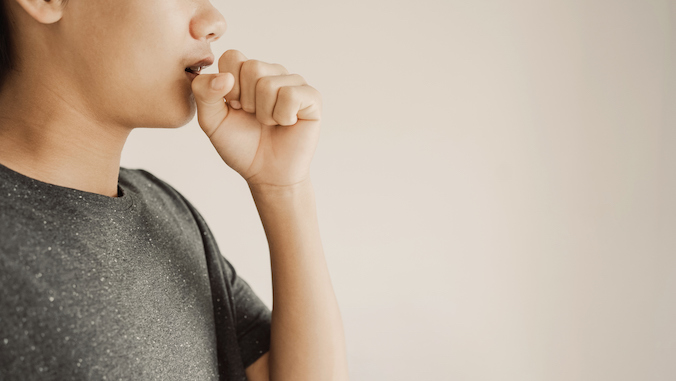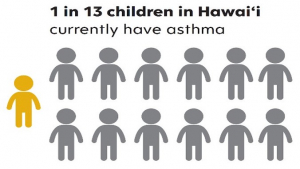
According to 2020 data from the Hawaiʻi Behavioral Risk Factor Surveillance System, one in 13 children in Hawaiʻi (7.7%) currently have asthma, which is slightly higher than the national average (7.5%). In 2019, approximately 689 emergency department visits and 66 hospitalizations in Hawaiʻi were for asthma among keiki aged 0—4 years.
A new public service announcement campaign identifying common asthma triggers and providing simple activities that parents can incorporate into their routines to help their children manage their asthma has been launched by the Hawaiʻi Department of Health (DOH) in partnership with the University of Hawaiʻi at Mānoa Nancy Atmospera-Walch School of Nursing (NAWSON).
“Hawaiʻi Keiki is pleased to partner with the DOH to increase health education for children and families to manage chronic asthma,” said Adeline Kline, a Hawaiʻi Keiki program advanced practice registered nurse and clinical educator, who serves as a campaign spokesperson. The Hawaiʻi Keiki: Healthy and Ready to Learn program within NAWSON is a partnership with the Hawaiʻi Department of Education (HIDOE) that provides school nursing services in Hawaiʻi public schools.

“Every single Hawaiʻi Keiki nurse working with student populations in the HIDOE sees asthma on a regular basis. It is a common, but serious condition. The school-based health team works collaboratively to educate and prevent asthma symptoms and complications, and treat acute issues when they arise,” said Kline. “By managing asthma symptoms and understanding asthma/allergy triggers, families can keep their children healthy and prevent loss days of schools and activities.”
“Anyone with asthma can have an asthma attack when exposed to a trigger,” said Brian Wu, Medicaid medical director at HMSA and pediatric pulmonologist at Kapiʻolani Medical Center for Women & Children in a DOH news release. “Asthma triggers vary from person to person, such as respiratory infections and environmental factors. It’s important for everyone in Hawaiʻi, especially parents, to identify the triggers that can make asthma worse. Common environmental triggers include roaches, dust mites, mold, secondhand smoke and vaping.”
Other common asthma triggers include bad weather, vog, air pollution and other airborne irritants, health conditions (such as chronic obstructive pulmonary disease), exercise, some medicines, strong emotions and respiratory infections, such as those linked to influenza (flu), colds and respiratory syncytial virus (RSV).
Downloadable action plan
The new campaign encourages parents to have an Asthma Action Plan for their child. The public is encouraged to visit the campaign website, ControlAsthma.hawaii.gov, to download the plan, and learn more about asthma signs and symptoms, triggers and information tailored for parents, caregivers, teachers and coaches. More information on statewide asthma and control efforts are outlined in the “Hawaiʻi Asthma Plan 2030.”
The Control Asthma campaign is slated to run through June 2023, and includes radio, digital, social media and mall advertisements statewide. Each month, the campaign will feature a common source that can trigger an asthma attack.

